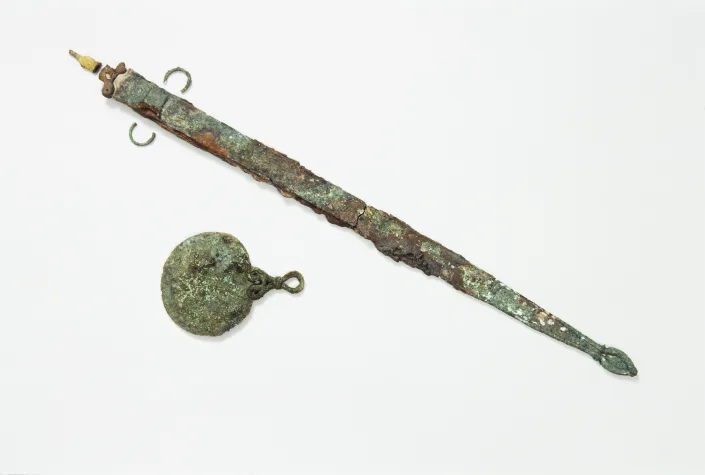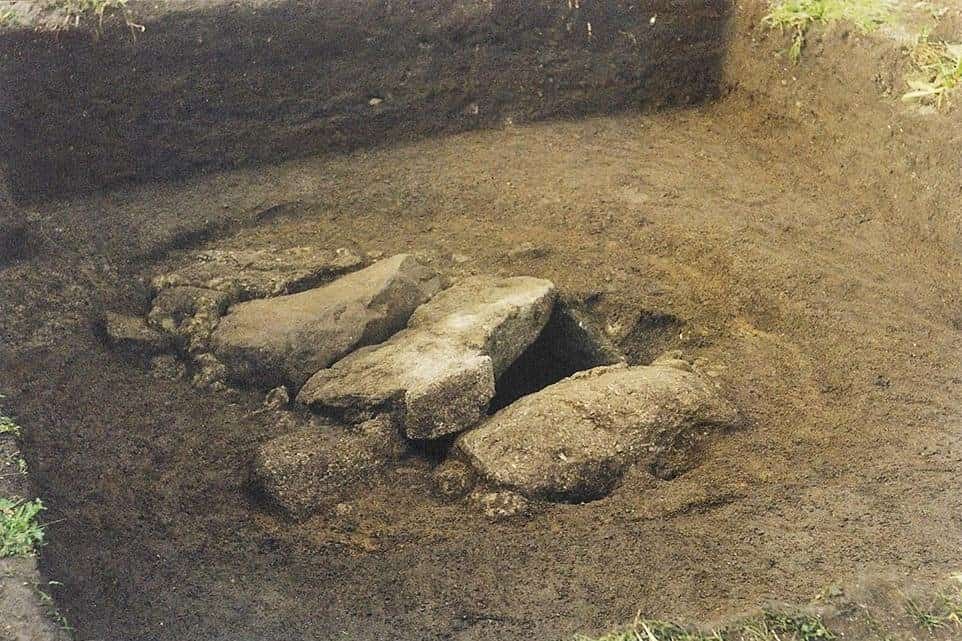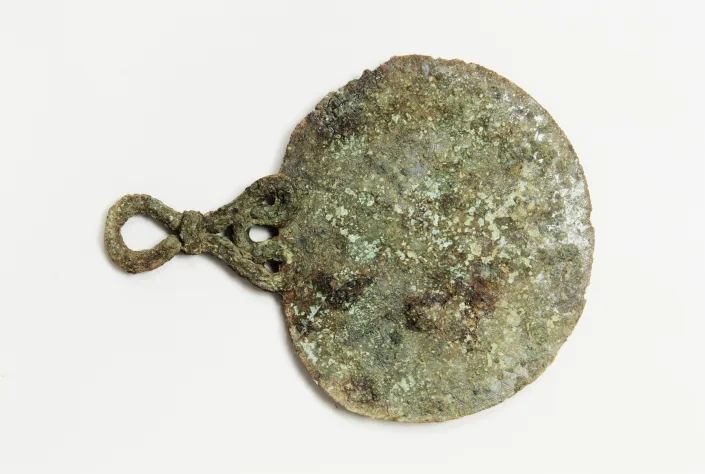
More than 2,000 years ago, a very high-ranking person was buried on the Isles of Scilly, just off the southwest coast of England, alongside the most curious combo of artifacts: a well-crafted sword and an elegant bronze mirror.
This juxtaposition has always proved puzzling to archaeologists because of the symbolism. It was customary for Iron Age warriors to be buried alongside their weapons, whereas burials destined for wealthy women often included a mirror. This tomb has both.
But a new study is now shedding light on the riddle. Genetic analysis of the remains revealed that the fallen warrior was not a man as was previously believed but rather a woman. These findings overturn longstanding assumptions about gender roles in Iron Age Britain, showing some women of rank played roles in warfare during that era.
“Although we can never know completely about the symbolism of objects found in graves, the combination of a sword and a mirror suggests this woman had high status within her community and may have played a commanding role in local warfare, organizing or leading raids on rival groups,” Sarah Stark, a human skeleton biologist from Historic England, said in a media statement.
“This could suggest that female involvement in raiding and other types of violence was more common in Iron Age society than we’ve previously thought, and it could have laid the foundations from which leaders like Boudicca would later emerge.”

Boudicca, a fierce Celtic warrior queen, was born in the 1st century AD in the lands of the Iceni tribe, now known as East Anglia, England. When her husband, King Prasutagus, passed away, the Roman Empire sought to seize control of the Iceni lands, leading to a brutal oppression. In response, Boudicca fearlessly led a rebellion, rallying her fellow tribes to reclaim their autonomy and seek vengeance against the Roman injustices.
With her forces, Boudicca unleashed devastating attacks on Roman settlements, causing shockwaves through Britannia. Though her rebellion faced defeat in a monumental battle, her legacy as a symbol of resistance and bravery against oppression endured, leaving a lasting impact on the Roman Empire’s governance of Britannia.
These new findings now show that Boudicca probably wasn’t alone. Female warriors may have been much more common than previously thought.
Reimagining gender roles in Iron Age society

The burial site, discovered accidentally by a farmer on Bryher Island in 1999, presented a unique challenge to researchers. Only a few bone fragments and teeth survived, making DNA extraction impossible. However, a breakthrough technique developed by scientists at the University of California, Davis, involving protein extraction from tooth enamel and linking it to sex chromosomes, provided the breakthrough needed to determine the individual’s sex. The results pointed to a 96% probability that the remains were those of a female.
The burial itself was already an extraordinary find, as mirrors were considered luxury items associated with magic rather than beauty during that time. They are rarely discovered in grave sites, and finding one alongside a sword in Western Europe is a remarkable rarity.

The grave also yielded other valuable items, including shield fittings, a ring for a sword belt, a copper brooch and ring, fibers from woven textiles, and possibly the remains of a sheep or goat skin.
Now that this discovery has opened up new possibilities about the roles of women in Iron Age society, researchers are eager to re-examine other similar burials for further insights.
“The results from the tiny fragments of tooth from Scilly were remarkably strong, even considering the degraded state of the bones. This success makes us wonder what other valuable information could be uncovered by revisiting other badly degraded burials,” Glendon Parker, a professor of experimental toxicology at the University of California.
If you’re interested in witnessing this captivating historical find in person, you can view both the mirror and the sword at the Isles of Scilly Museum. The research behind the exciting discovery was published in the Journal of Archaeological Science Reports.









